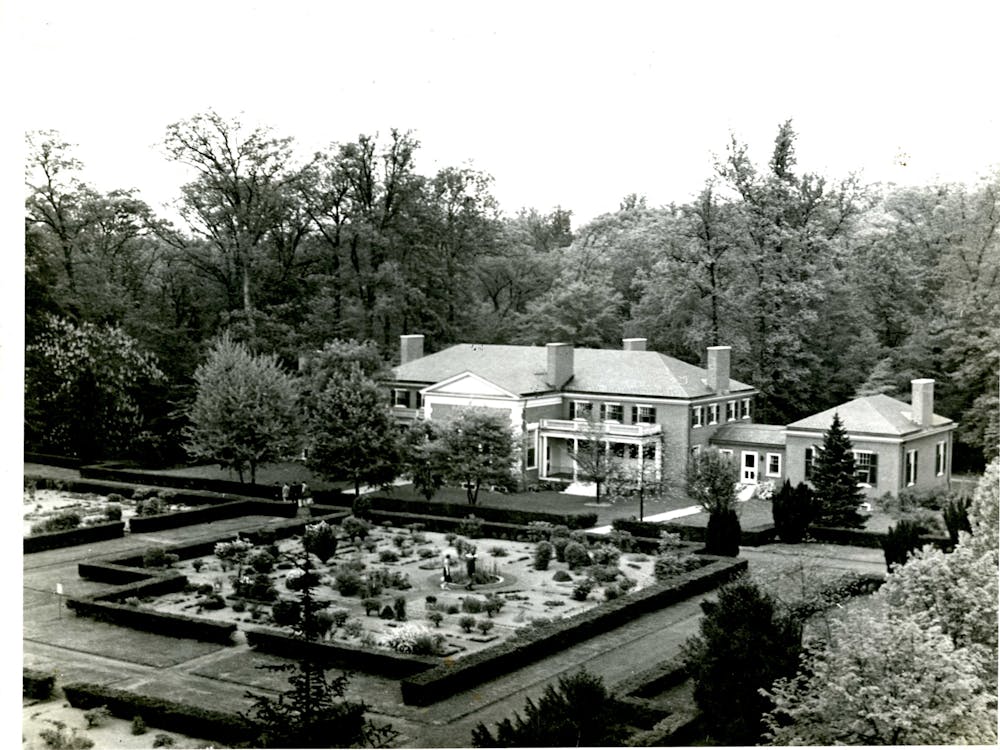The Physicians Committee for Responsible Medicine (PCRM) led a demonstration outside of Johns Hopkins Hospital on Aug. 21 in protest of the school’s use of live animals for surgical training.
The 37 protesters, including seven doctors, waved signs saying “End Animal Labs” and “Baltimore Deserves Better.”
After investigating 187 medical schools in the U.S. and Canada, PCRM found that Hopkins is one of four medical schools that still uses live animals to train students. Ninety-eight percent of medical schools no longer permit students to perform surgical procedures on live animals.
“I strongly believe that animals are not needed in... medical school education,” Dr. Rhoda Ruttenberg, a member supporter of PCRM, said. “Back in the ‘70s, when I went to GW Medical School, [I] had to take part in a dog lab…I’m horrified that I did it and that they ever had it because I could’ve learned that same stuff in any number of other ways. I have a big objection to these fancy show-and-tell entertainment type things that aren’t necessary to learning.”
Performing surgery on anesthetized dogs used to be common practice in medical schools; in the 1980s, many schools shifted to using pigs because their anatomy is more similar to human anatomy.
As part of their training, Hopkins surgical students make incisions and insert tubes into anesthetized pigs, who are killed after the procedure.
The large majority of American and Canadian medical schools have replaced live animals with computer simulations in reusable surgical training programs. Some of these programs offer haptic feedback, warning students when their virtual incisions are too deep.
“The medical literature shows clearly that [using live animals] is certainly no longer necessary,” Dr. John Pippin, director of academic affairs at PCRM, said. “I think it’s a point of shame for a top level medical school that’s supposed to be on the leading edge of educational standards to still be cutting up animals to teach students how to do surgery on people. It’s a real black mark on the medical school.”
PCRM organized Thursday’s demonstration to coincide with the orientation of new Hopkins medical students. All of the physicians that participated in the demonstration wore white coats.
“The general public, as we all know, do take some messages more strongly from doctors than from laypeople,” Dania De Pas, communications specialist and social media manager at PCRM, said.
One of these physicians, Richard Bruno, is a resident in the preventative medicine program at Hopkins. Bruno’s views on the use of live animals in medical education stem from his participation in a pig lab as a first-year medical student.
“I have not heard a morally defensible argument that we should continue the cruel and unnecessary practice of using pigs for medical education for medical students,” Bruno said.
Thursday’s demonstration was only the latest action in a dispute that began in 2006, when PCRM first became aware of Hopkins students’ work with live pigs. PCRM also staged a demonstration at Hopkins in 2008 and drafted a petition that 120 Maryland-based physicians have signed.
On Feb. 24, 2011, PCRM filed a criminal complaint against Johns Hopkins with the Office of the State Attorney for Baltimore City in conjunction with physicians Dr. Martin and Dr. Barbara Wasserman. PCRM alleged that injuring and killing live pigs violates Maryland’s animal cruelty statute and asked that the medical school’s use of live animals in student training be investigated and stopped.
Maryland’s animal cruelty statute states “that each animal in the State be protected from intentional cruelty, including animals… used in privately, locally, State, or federally funded scientific or medical activities.”
A month later, the State Attorney’s office concluded, upon careful review of the complaint, that Hopkins had not clearly violated this statute and that the dispute was to be resolved among the medical community rather than by criminal prosecution. According to Pippin, Hopkins School of Medicine claimed that it deemed the use of live animals in surgical training to be essential.
“The University is not telling the truth,” Pippin said. “It is by no means essential to do this.”
University officials insist that the use of live animals in surgical instruction is done in a legal manner and that the Johns Hopkins University Institutional Animal Care and Use Committee thoroughly reviews the school’s treatment of animals. They view the use of live animals as a valuable educational tool which allows students to experience surgery more realistically than they would using a simulation, while also providing students with an sense of responsibility for the lives of the beings on which they are operating. University officials also contend that they receive positive feedback from students regarding this instructional method.
Pippin said that he has been trying to arrange meetings with some of these officials, including Dr. Julie Frieschlag, the former chief of surgery, and Dr. Roy C. Ziegelstein, the vice dean for medical education.
“I think the reason they won’t talk to us is they don’t have a leg to stand on,” Pippin said. “They know they are lagging in the standard and they don’t care… There is difference of opinion in Hopkins, but those who have managed the surgery program have kept this [policy of live animal use] in place despite all the wolves at their door.”
Recently, PCRM attempted to start an ad campaign on Baltimore buses featuring the slogan “What does JHU have that 98 percent of schools don’t? Substandard Medical Education. JHU uses live animals to teach human medicine.” However, the MTA considered the slogan to be “political speech” and rejected this ad as well as two alternatives that PCRM proposed.
Overall, De Pas considers Thursday’s demonstration to be a success because it garnered media coverage and in doing so, increased awareness regarding Hopkins’ practices.
“Hopefully after all this media that we’re getting, Ziegelstein and other officials at Johns Hopkins Medical School will respond to us and start a dialogue,” De Pas said. “We definitely think it’s time. Johns Hopkins is a well-known institution. We also think that they should have their medical training up to par with their other aspects.”
The News-Letter previously covered the treatment of animals at Hopkins in its research facilities and medical school in greater depth in a May article.






















Please note All comments are eligible for publication in The News-Letter.